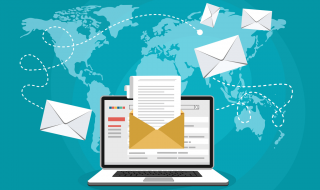
When a person continues to buy from your business, it’s not because you’re the only one available, but because they acknowledge your presence.
Anyone can acquire products from all over the world and stick a label on them in the era of e-commerce, undermining the identity of the original manufacturer in operation. But with that said, some brands have managed to develop huge fan followings over time.
The basic argument for brand loyalty’s importance in terms of profitability is simple. Most businesses rely on returning customers for more than half of their earnings. Not only do current customers who are loyal to a brand purchase much more consistently than new customers, but retaining the brand-loyal part is also considerably cheaper than attracting new customers through marketing efforts.
Keep reading if you want to learn ways to build it for your business.
Analyze data
When it comes to increasing brand loyalty, gathering and analyzing reliable data is critical. Your retargeting advertisements will be more effective if you have more data on your previous buyers. In turn, this will enable you to craft highly tailored offers to them, which are likely to entice them to buy from you again.
Be consistent
When it comes to developing loyalty, regularity is crucial. Customers should have the same experience with your brand each moment they connect with it. Most folks want to know that you will keep your commitments all of the time, not just when it’s advantageous for you. Even logos and graphic components should be consistent across all operating systems. You would be shocked at how much that goes wrong if you observe how other brands run their business.
Gather feedback

Image Credits: unsplash.com
Speaking with your consumers regularly helps to develop the relationship between your business and consumers. Inform your customers about changes at your company and get their opinions on your progress or an upcoming initiative. Hear and act on the feedback you receive to show them you value their comments. This can be accomplished through a variety of channels, including regular calls and messages, as well as alternative ways like networking sites and handwritten letters.
Draw up a loyalty program
Only a handful can honestly claim to be loyal to a single brand, which is logical given how fickle-minded humans are. Before buying something, everyone performs their online searches, and they will always come across flash promotions, which encourage readily shifting consumer behavioral patterns.
To get those clients out of a never-ending special offer cycle, lure them to your site with an irresistible offer and start establishing a rewards-based loyalty scheme. Think about giving your consumers unique treatment and other non-monetary incentives to keep them coming back. To put it another way, get them to reconsider what actual worth means to them.
Developing brand loyalty is your insurance policy for keeping your company moving and flourishing. Or maybe it’s easier to phrase it this way: if your company can’t keep its consumers, you will find yourself back at zero, spending money to gain more customers just to remain sustainable. And now that you know how important brand loyalty is, try putting some of the aforementioned methods to practical use for your company.




